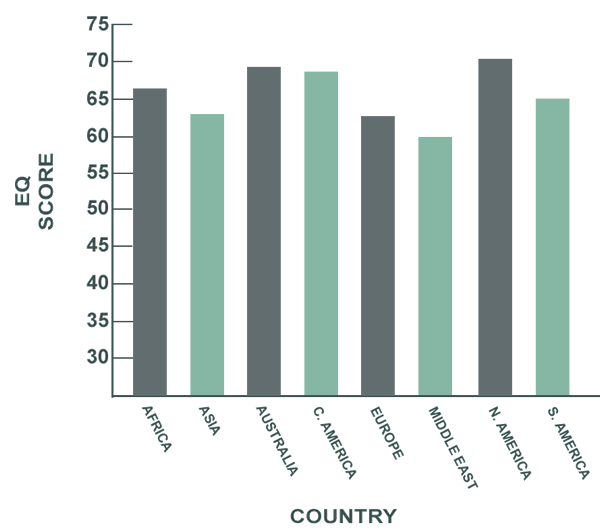By Lac D. Su, M.S.
Emotion is an intense state that arises intuitively rather than through conscious effort and is frequently accompanied by physical and behavioral changes. Recognizing emotional states in yourself and others and managing them effectively is the gist of emotional intelligence.
Basic emotions are expressed similarly throughout the world. People from different cultures perceive the same fundamental facial expressions and emotional cues. However, the methods through which various cultures manage these cues depend on the context and tradition in that society.
Thus, it is very important for businesses to learn to adapt to the cultures they interact with and operate in. It is also imperative to be aware of how actions from one culture are perceived by another and vice versa. Moreover, it is most important to be aware of how your actions, though acceptable to one culture, may be ineffective when dealing with another.
A Matter of Perception—Be Aware
Imagine you’re an American businessman meeting with a group of executives from Japan to discuss the possibility for a strategic partnership. During the discussion, you attempt to state your points by standing up, using hand gestures, and enunciating words and phrases with what you think is the “right” pitch and tone. Immediately, the executives from Japan take the
expressions with hesitation.
One Japanese executive leans over to another and whispers, “Is this someone we want to partner up with, he thinks we’re children”. Your colleague sees the two whispering, and as you leave the meeting, she utters, “We can’t do business together, everything’s a secret with them.”
Subtle emotional expressions vary between people and can easily be misinterpreted. Emotional intelligence determines the most effective way to overcome these differences, in moments of uncertainty. The trick is to stay in tune with one’s emotions, in the moment, to see what is “really” going on.
Emotions arise and are felt much the same from culture to culture, but the response to these feelings may be different. The example of executives from different cultural backgrounds in a meeting clearly demonstrates this dynamic. Both are excited about planning a partnership venture, however, the ways they express their excitement differ vastly and misunderstood by other.
Let us take another example. Some cultures place greater emphasis on relationship management and fellowship for other people. A culture that is collectivistic places greater emphasis on the “brotherhood” aspect rather than concern for the individual. Earning social acceptance takes precedence over one’s own emotional welfare.
As business continues the quest for true globalization, learning about and adapting to different cultures becomes increasingly essential. Understanding that basic emotions are felt the same, we need to learn how to manage different situations according to the context and cultural norm.

*Data collected solely using the Emotional Intelligence Appraisal®– English Version
An interest in comparing EQ worldwide inspired TalentSmartEQ researchers to conduct a global study using The Emotional Intelligence Appraisal®. The results were unexpected and astonishing. Although individual EQ scores
fluctuate, the bar graph above shows total EQ worldwide being close to the same, varying by no more than 7 points in different regions. In statistical terms, this is fairly small.
The value placed on each of the competencies may differ for every culture, but basic emotions are experienced the same globally. The art of emotional intelligence is paramount to managing interactions with people from different backgrounds successfully. Being able to identify emotional cues and manage them effectively takes finesse, patience, passion and keen “in- the-moment”
awareness.
Like a skilled knitter, the talent of dealing with people takes practice. Emotional intelligence is your thread, and people from different cultures are your fabric. The intricate threads of emotional intelligence, if woven properly, can interlace through the fabric of human connection—no matter what color, texture, or quality.
ABOUT THE AUTHOR:
Lac D. Su, M.S.
Lac D. Su is the Director of Strategic Alliances for TalentSmartEQ, the leading provider of emotional intelligence tests, products, and training. He forms and manages relationships with key TalentSmartEQ resellers and assists clients with the implementation of skill development initiatives.